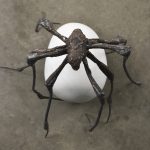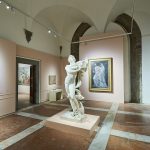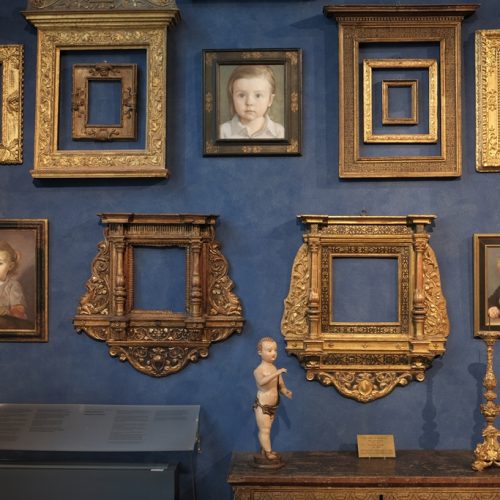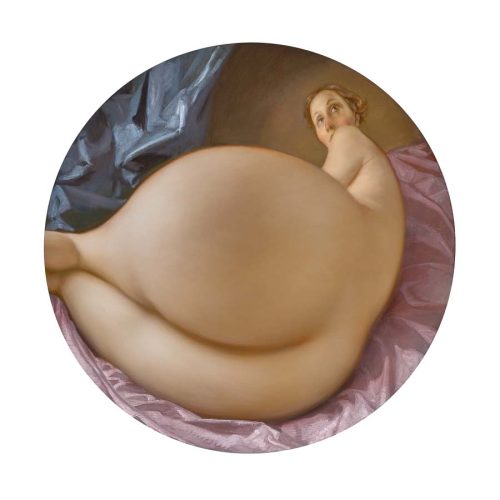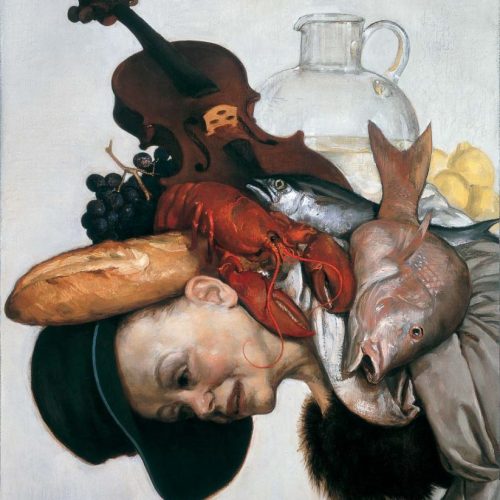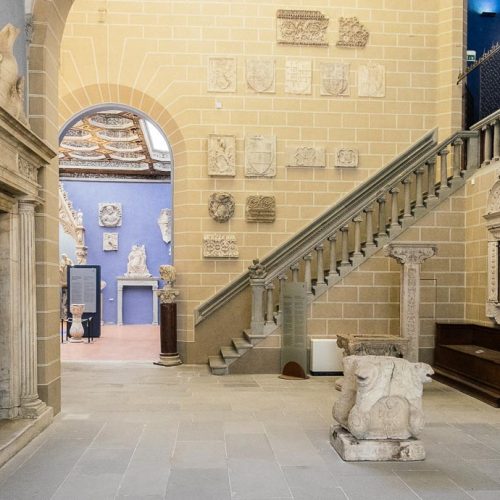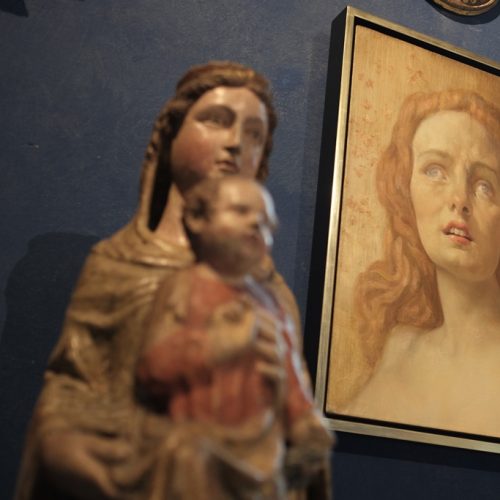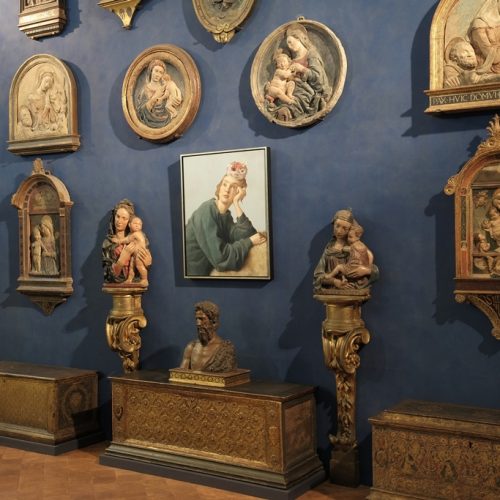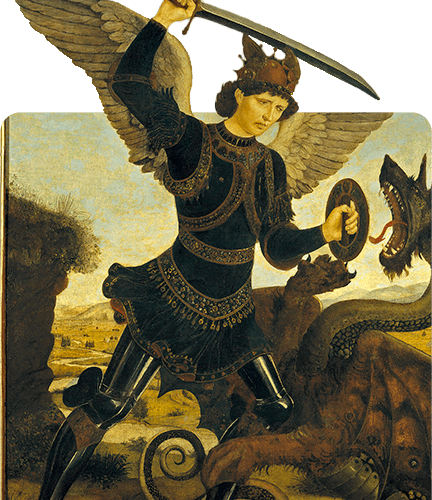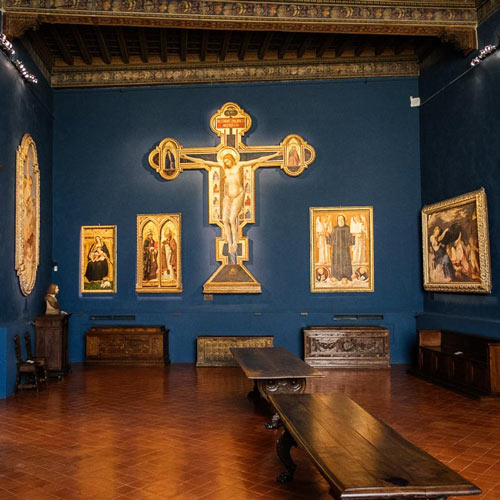John Currin
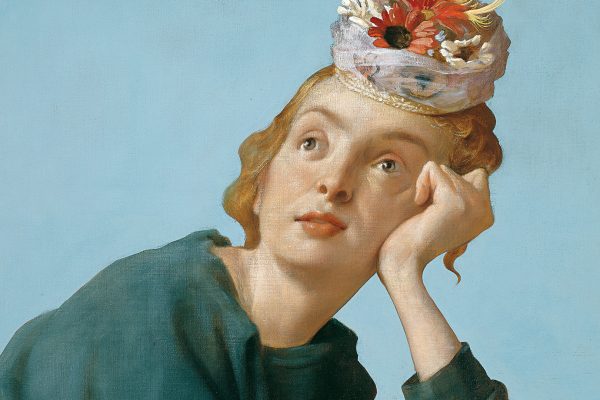
to 02 October 16
30 September
30 April
An exhibit by Antonella Nesi and Sergio Risaliti
John Currin, among the most appreciated artists of our time, will be the protagonist of an exhibit at Museo Stefano Bardini of Florence starting from June 13th to October 2nd. It is the first significant exhibition of the New York artist in an Italian public space. A painter displaying a sophisticated technique and a deep figurative culture, Currin is renowned and celebrated for his extremely elegant portraits and erotic scenes rendered with ironic, shameless realism. In his works, very often small paintings, Currin conceals his deep knowledge of art history and a very refined taste in representational composition. With settings that are never ordinary and often tacitly sarcastic, and a selection of topics that stylistically and graphically also recall glossy and pornographic magazines, the American artist redefined contemporary portraiture. His interpretation of female eroticism and of the American bourgeois psychology, proves almost surreal or grotesque, extremely unsettling. But his criticism is never aggressive nor obvious, never grotesque nor garish. His figures, dressed or behaving like lesser characters of a romantic novel or impassive mannequins in a fashion shop, display zeal also when engaged in solitary or group sexual activities, showing signs and expressions of an unmistakable psychophysical alteration. The anatomy, disproportionate or displaying a distorted perspective, the faces’ expressions, everything modifies the ideal Renaissance representation of a female body and face. In this sense, his works follow on the heels of Pablo Picasso and Willem de Kooning rather than on those of John Singer Sargent or Edward Hopper.
An instinctive, but always lavish, work, or, rather, a sort of sophisticated and refined “vulgarization” of classical, figurative art, allows Currin to exhalt the art of painting itself and to define with it a new kind of artistic beauty that avails itself of an unexpected imagery or figurative “manner”. The sometimes inappropriate bodies and faces become beautiful in the pictorial transfiguration, through the sophisticated vulgarization of the classical code. In some paintings men and women have sex as if they were interpreting a pornographic scene, his characters experience the body and sexuality in an ostentatious and altered way. They seem to be freely performing in a setting arranged for a movie or a selfie. Indeed, Currin searches for and creates a paradox, something between real and fake, contemplation and voyeurism, obscene and refined, photographic truth and figurative imagination. Languid and sluggish figures, not as a result of drugs or extreme experiences, rather of moral lassitude, offer the artistic pretext to paint with deliberate honesty and studied frankness, casting aside any academic nostalgia and ideological dislike of figurative painting.
Museo Bardini: virtual tour
by Sara Caccivio and Stefano Bergonzini
Never unpleasant, revolting and never predictable, Currin takes on different genres and styles, choosing and alternating different themes and modes, such as portraiture, still life, the obscene and indecent, the lyrical and sentimental. His skill emerges in portraits realized with quick and defiant brush strokes as in Frans Hals and Édouard Manet, in still lifes made with the calligraphic precision of a Dutch Renaissance painter, in wallpaper and rose bouquets displaying an impressionistic freshness. Every painting of his is also a contemporaneous homage to the grand European painting tradition and to its various seasons: Renaissance and Mannerism, Modern age and the erotic illustrations.
Nudity and genitals are displayed, exhibited with meticulous immodesty, just as a hairdo, a fabric, a piece of decoration or furniture, china, a pitcher brimming with water, a turkey or a lobster . The women depicted while having an intercourse or an elegant conversation often smile and grind their teeth, they suffer and take pleasure at the same time and in the same way. Anger, hysteria, suggestive defects introduce “comedy” elements within noble compositions. Quite often a sense of emptiness and cold indifference emerge from the sparkling beauty, the lavish sensuality, as if wealth and luxury had made the skin and soul insensitive, turning romantic love into an apathetic sexual act. His women can be prosperous (round and big breasts and hips) or the exact opposite, showing through their thinness a sterility of the body and of the soul. Sexual voracity seems an exaggerated consequence of the moral frigidity of a social class shaped by luxury and consumerism. At the same time one experiences a sense of true wonder facing the miracle of painting when it is able to capture life going by in an expression or a shape, a thrilling or pleasant feeling, a sentiment of benevolence or compassion in a line or a colour, fixing forever that magical moment when an object or a woman, or an expression eternally revives through art. In his career Currin practiced noble and vulgar genres and subjects, treating them in an outrageous if not grotesque way, unveiling defects, vices, pain, idiosyncrasies, the pathological side of libido and the distressing one of desire. Every unsettling emotion, also pain, sorrow, anguish, finds space on an similar or opposite painted surface. Indeed, the brush strokes appear at one time defiant and quick or slow and thoughtful, accurate and punctilious or immediate and sarcastic. The exhibit includes paintings never displayed in Italy and chosen by the artist to create an interaction with the wonderful collection of paintings and statues of the Museo Stefano Bardini, a museum dedicated to the great Florentine antique dealer and collector of the nineteenth century. Family portraits (Rachel, his wife, the three children Francis, Hollis and Flora), allegorical portraits (Flora, The Penitent, The Lobster) and female portraits (Bent Lady, Anna, Big Hands), female nudes (Nude in a convex mirror), introduced for the first time in Italy right next to Donatello’s Virgins, little bronzes and china, carved frames, seventeenth-century paintings, Medieval wood statues. Some drawings, too, will be on display, to show Currin’s prodigious technique interacting with Tiepolo and Piazzetta’s sprezzatura, exemplified by a number of significant works included in the collection of Museo Bardini. A catalogue (Forma Edizioni) with colour reproductions of John Currin’s works and critical essays by the curators will be published on the occasion of the exhibit by Antonella Nesi and Sergio Risaliti.
The exhibition promoted by the Comune di Firenze, is organized by Mus.e Association in collaboration with the Gagosian Gallery in Rome and with the support of Faliero Sarti.

